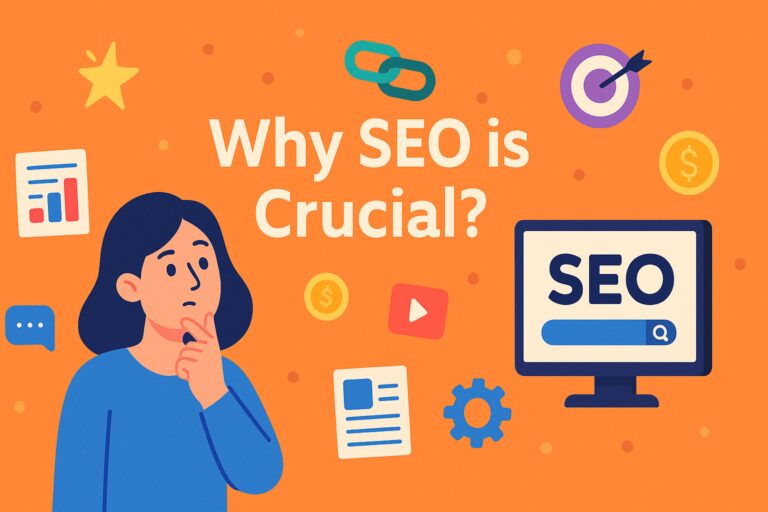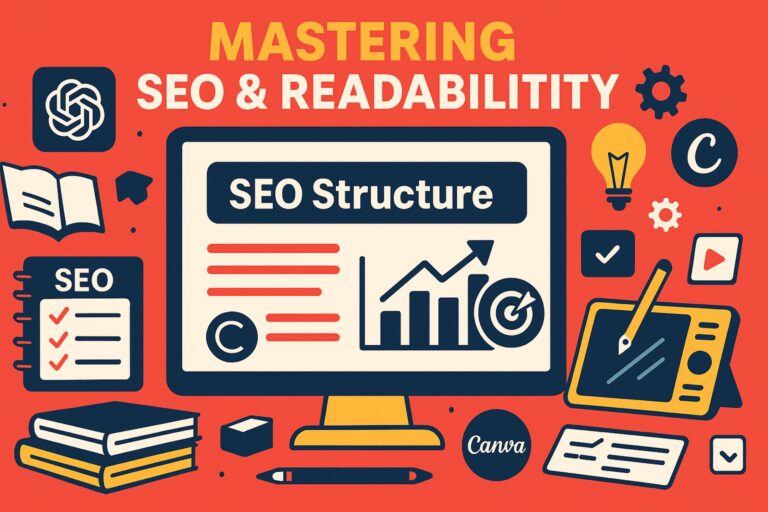🧠 Copywriting for SEO Content Basics – Drive Traffic with Words That Rank & Convert

🔍 What is SEO Copywriting?
SEO Copywriting is the art and science of writing content that:
• Ranks well on search engines (like Google)
• Answers searcher intent clearly
• Drives clicks, conversions, and engagement
Unlike traditional writing, SEO copywriting focuses on how content is structured, optimized, and discovered by your audience online.
📌 Why SEO Copywriting is Crucial

• 68% of online experiences begin with a search engine
• Top 3 Google results get 54% of clicks
• Organic traffic is free and long-lasting
Whether you run a blog, a Shopify store, or a service website — SEO content is your most cost-effective traffic generator.
🧠 What You’ll Learn on This Page
This page will walk you through:
• Keyword research basics
• Writing readable and optimized blog posts
• On-page SEO best practices
• Structuring content for humans & algorithms
• Freelancing as an SEO writer
🔑 Keyword Research Basics

Start with understanding what your audience is searching for. Use tools like:
Google Keyword Planner (free)
Ubersuggest (freemium)
AnswerThePublic
Ahrefs/SEMRush (paid)
Tips:
• Target long-tail keywords (e.g., “best AI tools for writers”)
• Check search intent (informational, navigational, transactional)
• Analyze competitors ranking for your topic
📝 How to Write SEO-Friendly Content
1• Title (H1) — Include primary keyword, make it compelling
2• Meta Description — 150-160 characters, summarize value
3• URL Slug — Keep it short, use main keyword
4• Headings (H2, H3) — Use keywords naturally
5• Intro Paragraph — Hook readers and introduce the topic
6• Body Content — Clear, valuable, keyword-optimized
7• Internal Linking — Link to other relevant blog posts
8• External Linking — Link to authority sources
9• CTA (Call to Action) — What should readers do next?
📋 Example SEO Structure for a Blog Post

Topic: How to Earn with Canva (Long-tail keyword)
Title: “How to Earn Money Online Using Canva: A Beginner’s Guide”
Intro: Relate to the audience’s struggle, promise results
H2: Why Canva is Great for Creators
H2: 5 Ways to Earn Money with Canva
H3: Freelance Design
H3: Selling Templates
H3: Social Media Management
H2: How to Start (with tools, setup tips)
H2: FAQs + CTA (Download Free Canva Kit)
✅ On-Page SEO Checklist
• Primary keyword in H1, meta, slug, intro, and 1–2 subheadings
• Secondary keywords sprinkled naturally
• Short paragraphs (2–3 lines max)
• Bullet points and visuals (if applicable)
• Mobile-friendly formatting
• Image alt texts optimized
• Fast-loading pages (Google Core Web Vitals)
🧲 The Balance Between SEO & Readability

Yes, keywords matter — but clarity, value, and tone win hearts (and rankings).
Use:
• Conversational tone
• Simple, scannable formatting
• Active voice
• Clear headings
•Reader-focused approach
Avoid:
• Keyword stuffing
• Long blocks of text
• Over-optimization tricks
Remember: Google’s algorithm now prioritizes experience, expertise, authority, and trust (E-E-A-T).
🛠️ Tools to Boost Your SEO Copywriting
Grammarly – Fix grammar and tone
Hemingway App – Improve readability
Surfer SEO – On-page optimization suggestions
Yoast SEO (WordPress plugin) – SEO scoring for each post
ChatGPT – Keyword brainstorming and outline generation
🧑💻 Freelancing in SEO Copywriting

As an SEO copywriter, you can:
• Write optimized blog posts for businesses
• Improve old posts with better keywords and structure
• Offer on-page SEO audits
• Create affiliate product review articles
Earning potential: $50 to $500+ per article based on experience, niche, and performance results.
Platforms to find work:
• Fiverr
• Upwork
• Job boards like ProBlogger, FlexJobs, and Contra
🎯 Practice Projects to Build Your Portfolio
1• Write a 1000-word blog post using 3 long-tail keywords
2• Optimize an existing post for SEO (add headings, meta, keywords)
3• Create a content plan for a niche website (5 topic ideas)
4• Write a product review that targets a commercial keyword
📈 Measuring Success

Track metrics like:
• Organic traffic (Google Analytics)
• Keyword rankings (Ubersuggest, Ahrefs)
• Time on page
• Bounce rate
• Conversion rate (opt-ins, sales, clicks)
🧩 Common Mistakes to Avoid
• Ignoring search intent
• Forgetting to update older posts
• Writing without structure or keyword strategy
• Not linking internally
• Neglecting metadata (title, slug, meta description)
🌟 Final Thoughts: Write to Rank, Write to Serve
SEO copywriting is both an art and a science. If you focus only on Google, you’ll sound robotic. If you forget SEO entirely, you’ll stay hidden. The magic happens in the middle — write valuable, optimized content that helps people.
With consistency, strategy, and learning, you can grow your traffic and income over time.

Let Fantasy Time guide your journey toward content that matters.
Learn Smart. Earn Smarter.
